Breaking News
OSINT Focus | Airborne drones, Russia catches up on design delays with SU-57 Weaponry.
The first image of a prototype Russian attack drone, designed by the Sukhoi company to be integrated with the fifth-generation Su-57 fighter jets, has been released. Interestingly, on April 1, 2024, details of the patent for the development of an aerial attack drone and its operational method were unveiled. The timing, coinciding with April 1, initially led many sources to consider the news a hoax. However, the images of the filed patent depict the drone as an integral part of the Su-57's armament. The first media reports about these new drones were published in November 2023, citing insider information. By the end of July 2024, Sergey Chemezov, director of the state-owned company Rostec, officially confirmed the inclusion of these drones in the arsenal of Russian fifth-generation aircraft.
Follow Army Recognition on Google News at this link
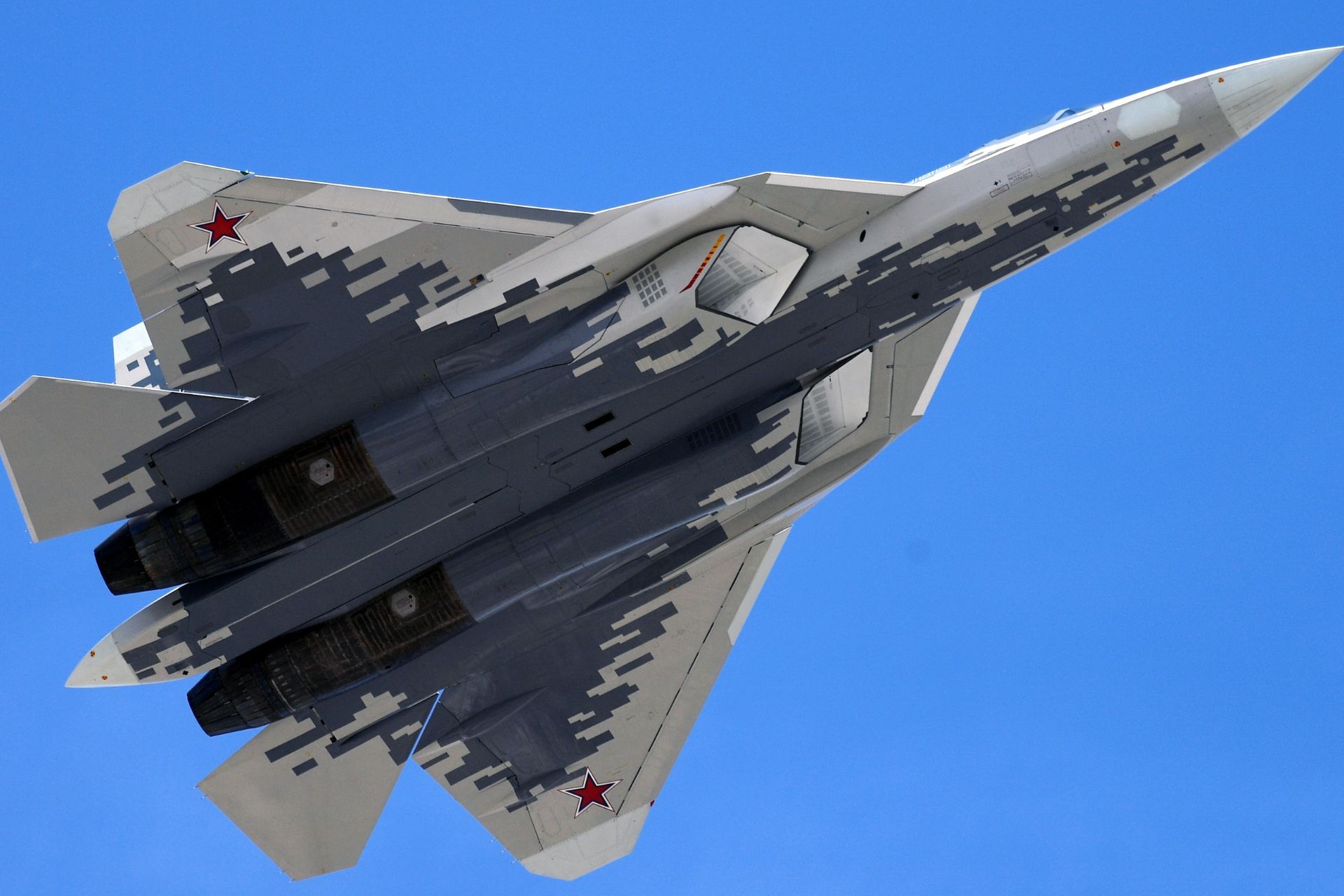
SU-57 inflight picture from Russian State media (Picture source: Russian TV channel Телеканал «Звезда»)
The S-71: Small Drone with Big Uses
Delving into the details of the patent, the drone demonstrates remarkable autonomy. It can operate autonomously in automatic mode, detecting and striking targets on its own. It can also function in relay mode, where it transmits information about detected targets and waits for attack instructions from a mobile ground control station. Impressively, it can also receive strike confirmations from the operator pilot aboard the launch aircraft.
Sources indicate that the development of this versatile drone began in 2019. With the onset of a military operation in Ukraine, the process was accelerated and streamlined to ensure rapid mass production. Furthermore, Sukhoi has established its own production line for control and guidance systems to reduce reliance on external component suppliers. This level of innovation and self-sufficiency sets new benchmarks in the defense industry.
The aircraft primarily gained in strike capabilities, extended range, and enhanced stealth. The S-71 drone features a trapezoidal design that minimizes its radar signature, foldable wings to reduce drag, a V-tail for stability, and a turbojet engine.
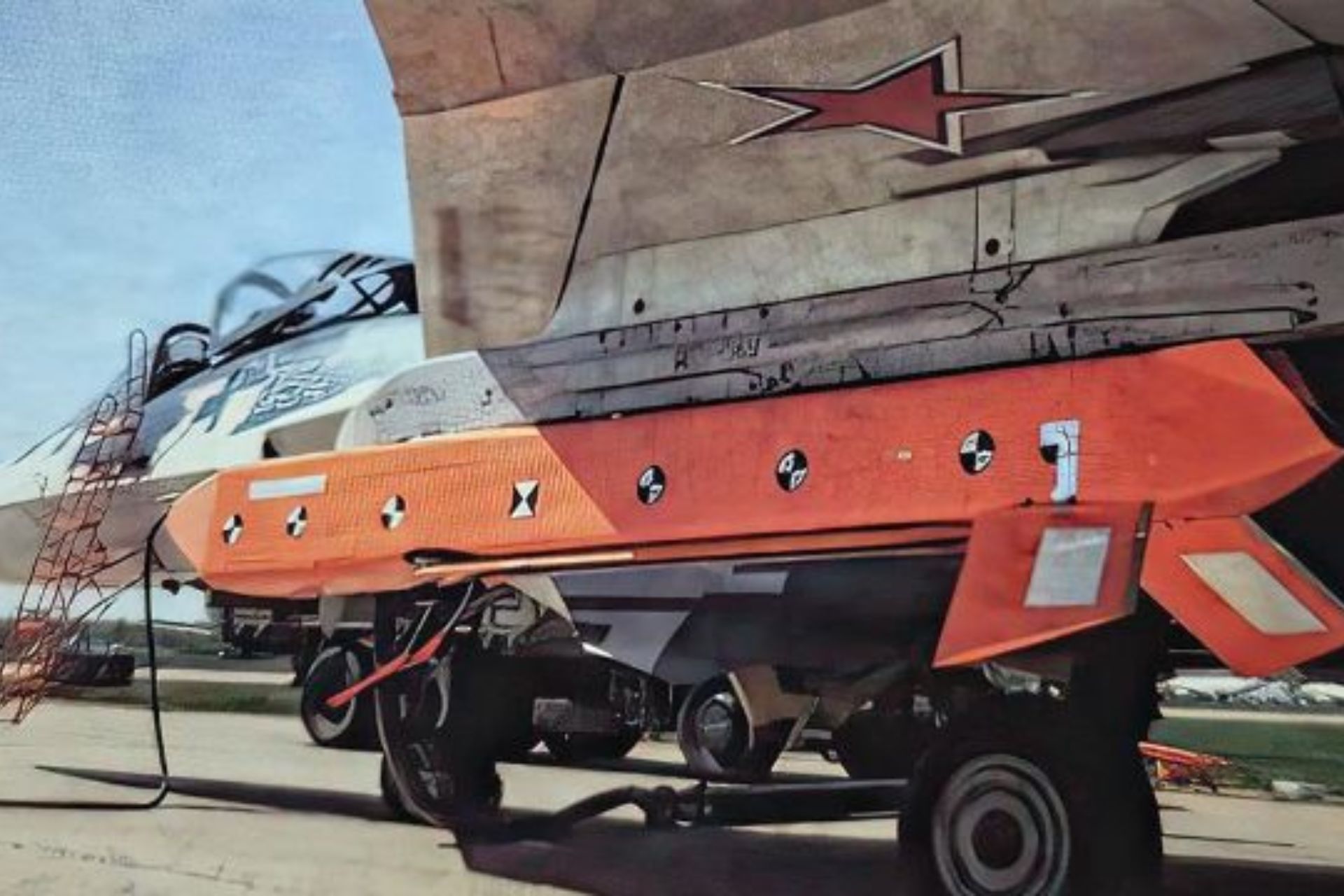
SU-57 with S-71 mounted (Picture source: Russian War bloggers)
Equipped with the TRDD-50 turbojet engine, also found in Russian cruise missiles Kh-59M and Kh-101, the drone can reach speeds of Mach 0.6 and fly at an altitude of 8,000 meters. Although the specific range of the drone remains unknown, it is available in two variants: the S-71M Monokhrom and the S-71K Kilim. The Monokhrom variant can be stored in the internal compartment of a fighter jet's fuselage, while the Kilim variant is designed for external suspension.
The Monokhrom variant is equipped with a modular military payload and an electro-optical guidance system, effective in both light and dark conditions, and controllable via a data link connected to the operator. Additionally, in autonomous mode, the drone can use onboard data to locate and engage targets, requiring operator confirmation before striking.

Operation of the S-71 according to the patent filed with the central patent office ( Picture source: Rospatent)
The War in Ukraine: An Incubator for Technological Advancements
Since 2022, Russia has actively pushed the boundaries of its technology, focusing on launching drones from bombers and fighters. Some reports suggest that Russia has managed to crack the complex code of creating a docking mechanism for aircraft, mastered by the Americans. This ingenious mechanism allows for the capture of unmanned aerial vehicles (UAVs), storing them in the cockpit mid-flight, and deploying them as needed.
This versatile system can be installed on various types of aircraft, including fighter jets, strategic bombers, and transport planes. A patent from the Federal Institute of Industrial Property highlights the broad applicability and flexibility of the system.
The proliferation of UAVs in military arsenals worldwide is inevitable. The tactical advantage provided by deploying multiple drones is a priority for militaries globally, particularly in the United States and China. In November 2021, the U.S. Army took a significant step forward by successfully launching and recovering a X-61 Gremlins drone mid-flight from a C-130 aircraft.
This historic achievement represents a crucial advancement in the U.S. Army's ongoing efforts to perfect the deployment of drone swarms from airborne motherships. The successful launch of the Gremlins drone took place at the Dugway Proving Ground in Utah on October 29.
The integration of attack drones with the Su-57 significantly enhances its battlefield versatility. By launching drones from its wing, the Su-57 can extend its range and attack targets beyond its immediate line of sight.
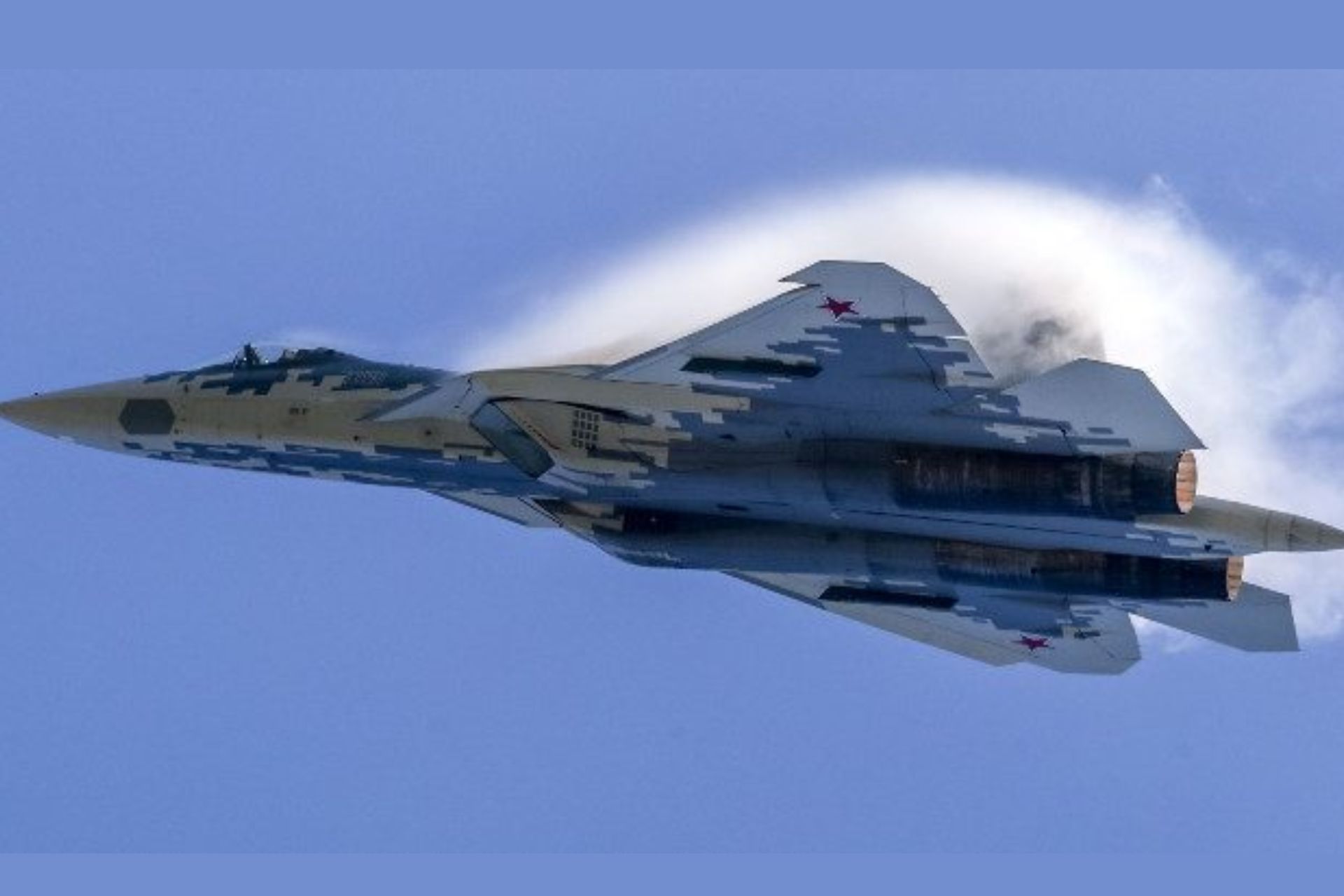
Su-57 accelerates and prepares to pass MACH 1, with the air beginning to form a cone around the aircraft during its test phases ( Picture source: Russia Aerospace forces)
The Drone: Amplifying Strikes or Providing Active Protection for a Fragile Weapon System?
Attack drones launched from the Su-57 can serve as force multipliers by performing various roles such as reconnaissance, electronic warfare, and direct attacks. This multi-role capability allows the Su-57 to gather real-time intelligence and disrupt enemy communications and radar systems, thus increasing its situational awareness and operational effectiveness.
The use of drones also allows the Su-57 to engage in swarm tactics, where multiple drones can be deployed to overwhelm enemy defenses. This can create confusion and force the adversary to disperse its defensive resources, making it easier for the Su-57 and other friendly forces to penetrate enemy lines.
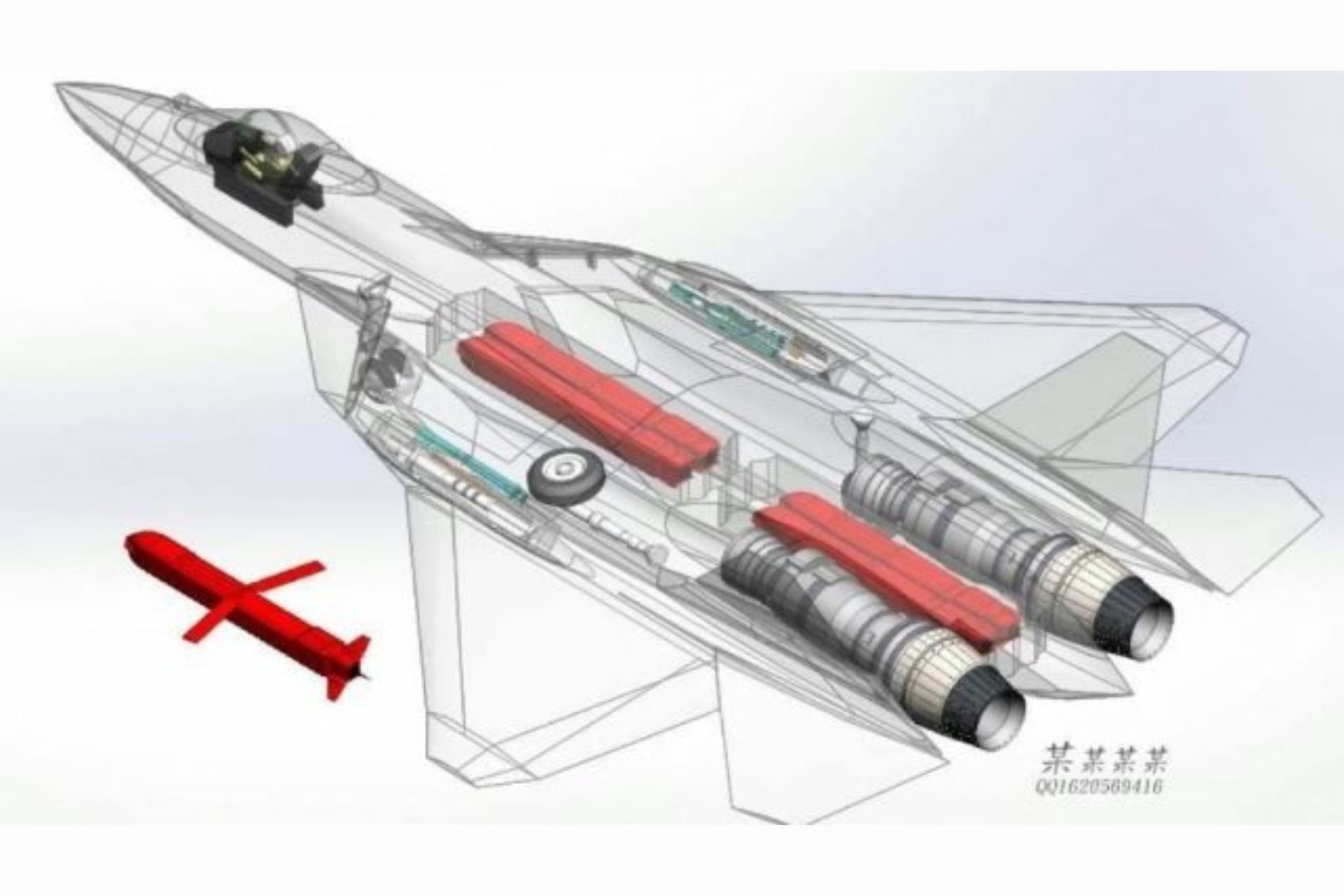
Internal storage of S-71 in SU-57. Even with 4 drones inside the plane external attach point are available for ammunition ( Picture source : Rospatent)
The ability to launch drones from the Su-57 also enhances its stealth capabilities. Drones can be used to identify and neutralize enemy radars and anti-aircraft systems before the Su-57 enters contested airspace. This preemptive action minimizes the risk of detection and engagement by enemy forces, allowing the Su-57 to maintain its stealth profile.
Moreover, drones can serve as decoys, diverting enemy fire from the Su-57 and other high-value assets. By sacrificing relatively inexpensive drones, the Su-57 can preserve its own stealth and combat capabilities, thus maintaining its operational availability for more critical missions. It is known that the Su-57 is relatively fragile; in June, Ukraine conducted a drone strike on the Akhtubinsk airfield in the Astrakhan region of the Russian Federation, located 589 kilometers from the combat line. The Su-57 was seen on fire due to an explosion and debris nearby. The drone will therefore help fix enemy air defenses, providing at least temporary protection for the aircraft.
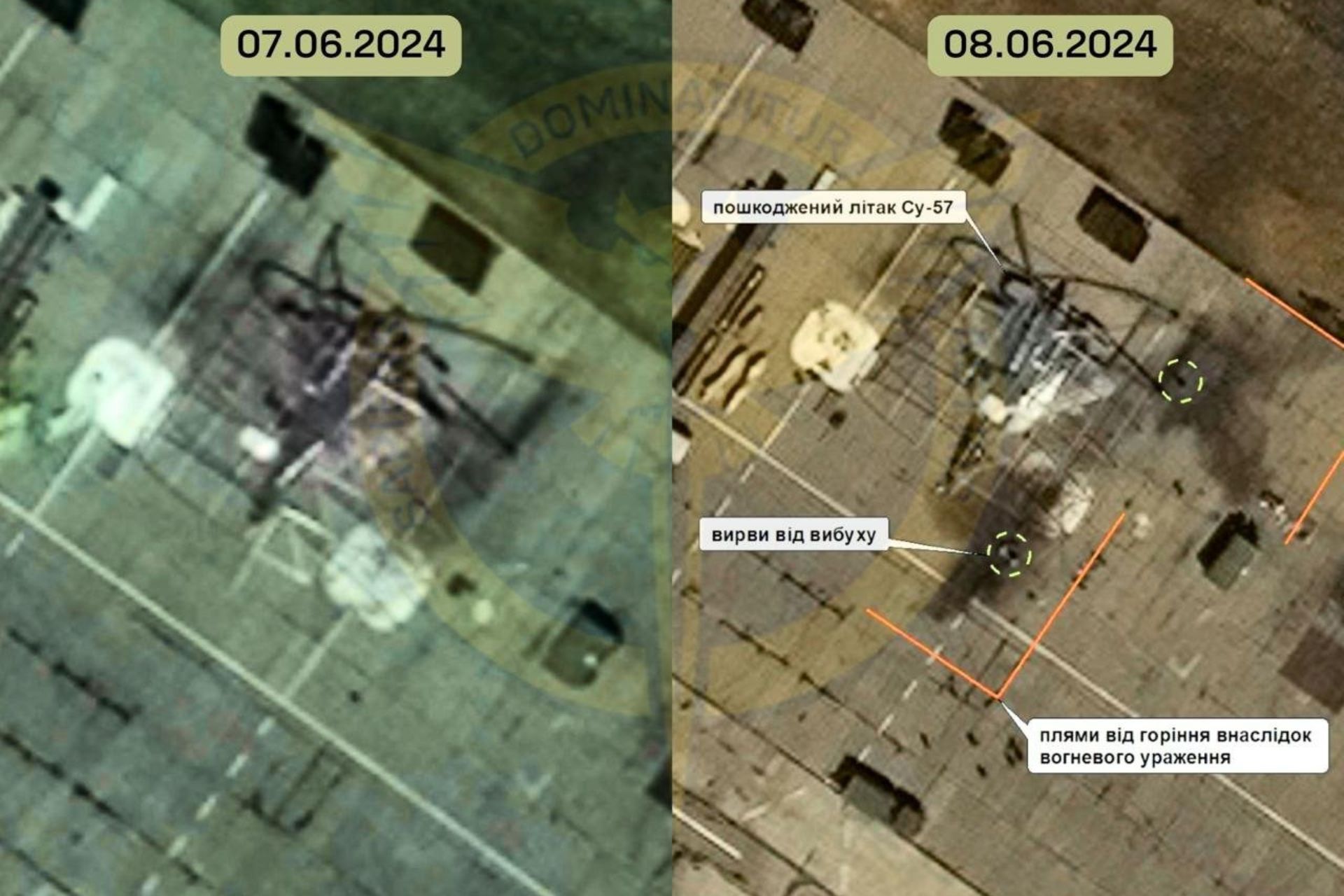
Ukraine says they destroyed a SU-57 durig a drone strike on the Akhtubinsk airfield in June 2024 (X/@Osinttechnical)


























